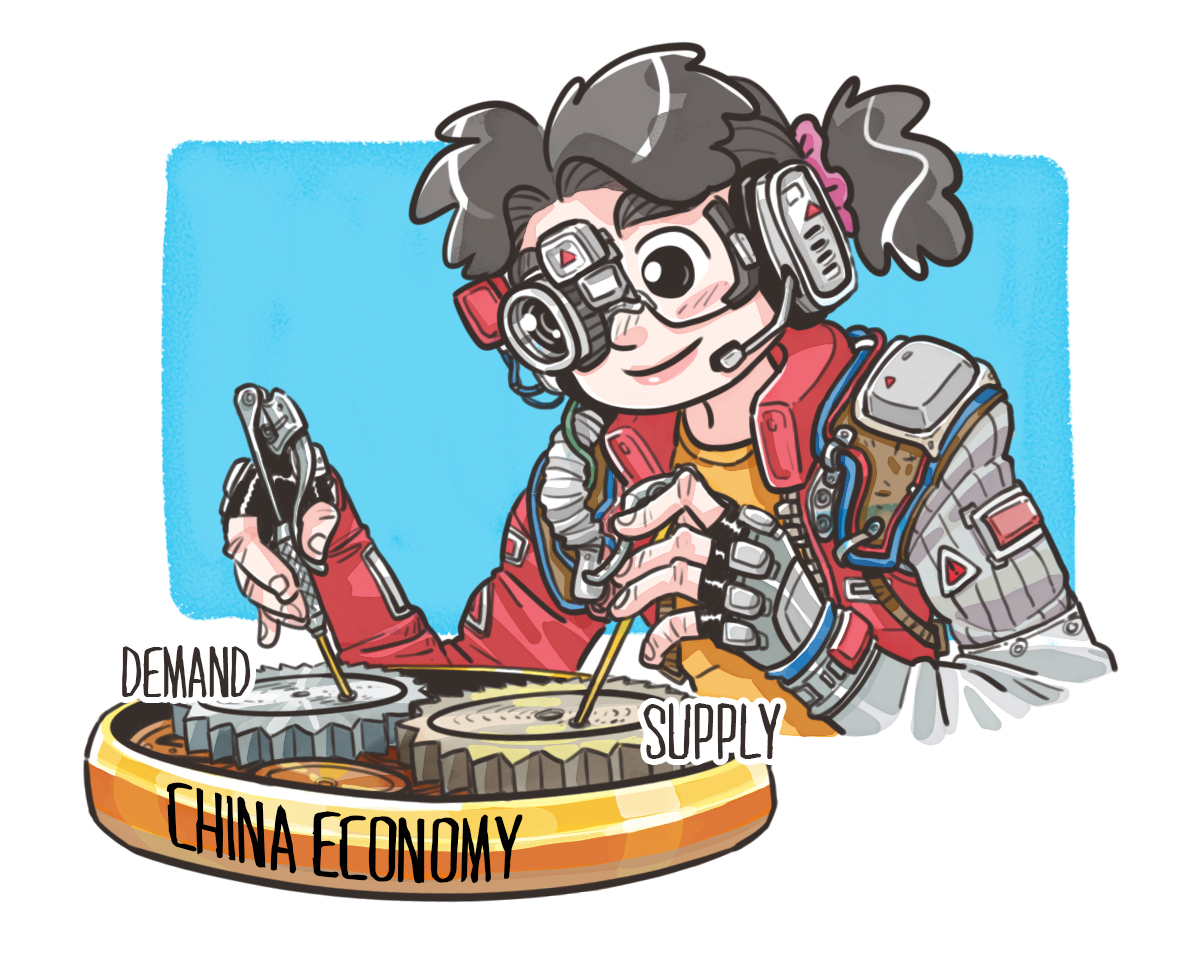Broader view should shape policy changes
By Liu Yuanchun | China Daily | Updated: 2021-11-08 10:31

It was not a surprise that the year-on-year growth rate of the Chinese economy fell to 4.9 percent in the third quarter, from 18.3 percent in the first quarter. We had predicted the quarterly rate would gradually slow down to around 5 percent.
Yet the two-year average growth rate dropped from 5.5 percent in first quarter to 4.9 percent in the third quarter, indicating the upward recovery momentum was impacted by various factors.
A sustained return to normalized growth is essential, but it is more important to clearly analyze the causes behind the situation. I think the lower growth rate was from a seldom seen narrowing in both demand and supply.
Although the supply-side growth rate remained above 6 percent, the whole economy will be systemically impacted if industrial output growth falls to less than 4 percent. Moreover, the index of services production was stagnating, and whether that is only related to the pandemic or also related to other factors remains to be determined.
On the consumption side, the core reasons for the decline in consumer purchases are the big decline in services consumption and contact consumption and the weakening of the holiday economy and the tourism industry due to the pandemic. In addition, some changes on the consumer side were also caused by disturbances in the supply chain.
There was an 11-to-13-percent drop in automobile consumption. This drop was mainly related to a chip shortage, but was also closely related to the entire automobile consumption structure and the supply situation of consumer support services.
From the perspective of investment, on the one hand, overall confidence is sluggish and the foreseeable decline in investment returns and uncertainties has led to people taking a wait-and-see attitude. On the other hand, some vital engines of Chinese investment-infrastructure, construction and real estate investment-are also facing restrictions.
Factors behind the decline in both supply and demand mainly include the following:
Apart from disruptions from the pandemic and extreme weather, raw material prices have been surging. Based on the current situation, it seems that the impact from energy-related commodity prices will continue. This is what everyone recognizes. The discussion concerns what causes commodity price rises-domestic factors, global supply bottlenecks or financial issues? There is a consensus on short-term trends, but a lot of debate revolves around medium-term differentiations.
China was the first country to rescind unconventional moves such as stimulus and pandemic relief policies, and the first to normalize macroeconomic policies. In this regard, China spent the first half working to bring fiscal and credit levels back to normal. We need to study whether there is an overall strategic positioning error.
At present, the pandemic is not yet under control, and the global economy is still facing a difficult recovery. China's economy was the first to recover. But, how to consolidate the achievements of the recovery so that the economy can steadily reach a state of normalization? That is the next challenge. What we need may not be simply normalizing macroeconomic policies.
Also, as macroeconomic policies become normalized, we have begun to pay attention to deep-seated structural issues and risks.
For the real estate sector, long-term constructive measures have been introduced, to be coordinated with short-term controlling policies. Based on the real estate policy, many adjustments have been made to some energy-intensive industries. In addition, policies have been shifting from the aggregate to structural issues, and from targeting recovery and growth-preservation to risk control.
We are between an old infrastructure and "new infrastructure" stage. For various reasons, the number of regional government projects in planning is small, the use of a large number of targeted funds is inefficient and local government control over various flexible off-budget funds has declined significantly due to unsuccessful land auctions.
The coordination between policies needs betterment. Coal supply shortages and electricity restrictions have demonstrated risks from after-event adjustments and coordination.
The operation of the economy depends on its internal momentum, which depends on the profits of enterprises, the incomes of residents and government revenue.
The producer price index and consumer price index rose by 10.7 percent and 0.7 percent year-on-year, respectively, in September. That has led to significant differentiation for profits among various industries, and such gaps will cause bottlenecks in the running of the economy.
For residents, expectations for incomes are not very good. Salaries have risen, but operating income has begun to decline.
For government revenue, it is more complicated, as there are huge revenue differences among governments of coastal areas, inland regions, developed provinces and less-developed areas. Some governments may have zero and even negative growth in revenues.
If we want to keep the momentum of economic growth on track, the only way is to strengthen macroeconomic coordination and provide enterprises with greater flexibility and resilience.
It is very important to plan early to hedge against the possibility that a large number of small and medium-sized enterprises and fragile industries will have operational difficulties as commodity prices and import prices continue to rise and export and consumer prices stay at low levels.
The purchasing managers' index registered below 50. We need to fully understand the different factors that led to the 4.9 percent year-on-year growth of GDP in the third quarter, and to take risk-averse measures in the face of changes in market entity incomes and expectations.
I have suggestions as follows:
First, we need to have different policies based on research of the factors behind the slowdown of the economy.
Second, we must adopt policies to secure stable growth, and a second round of implementation of measures to ensure stability on the "six fronts" and security in "six areas". The first round of such measures, rolled out in May last year, are very effective to realize China's miraculous achievements in combating the pandemic and the positive economic growth. However, when making a second round of such measures, we cannot be overly optimistic about the current situation.
We still need to appreciate the uncertainty of the pandemic, the instability of the international environment and hazards regarding internal strategic transformation and structural adjustments. Therefore, economic policies should not simply switch back to normal. Instead, overall expansion in fiscal and monetary policies should remain a basic policy theme during and after the pandemic.
Third, policies for stimulating aggregate demand should be well coordinated with structural adjustment-related policies. This will help SMEs, spur employment structure improvement, streamline economic structural upgrades and enhance new energy replacement. Targeted cuts to the reserve requirement ratio and support for SMEs and special industries should continue.
In the post-pandemic era, internal risks will be more complicated. The economy will be less reliant on the real estate sector.
The uncertainties of the pandemic, international environment, internal strategic transformation and structural adjustment all require us to take a higher and broader view when making policies to deepen reforms with new ideas, and thus avoid various problems caused by a series of macro-coordination failures that appeared in the past.
The writer is vice-president of the Renmin University of China in Beijing.
The views don't necessarily reflect those of China Daily.























